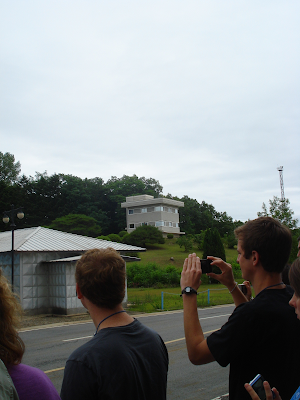| The second weekend of Kyle's trip we headed back to Seoul for a tour of the DMZ. The USO has a nice DMZ tour so I booked it for Saturday. We left right after school, and got to Seoul around 9 pm. After looking for motel, we found a pretty cheap one right by the station. This time we got Kyle his own room so we didn't have to hear him snoring (and the room was too small for three people.) We had to be at Camp Kim by 7:30 in the morning, so we went to bed right away. We woke up a little late, and Kyle wanted to shower, so we had to rush to get to the metro. We had lots of metro practice the weekend before, so we kinda knew what we were doing. Luckily when we got off the metro there were some other people who didn't know where they were suppose to go and we followed them to Camp Kim. Then we had to get on the bus for an hour ride north! |










































No comments:
Post a Comment